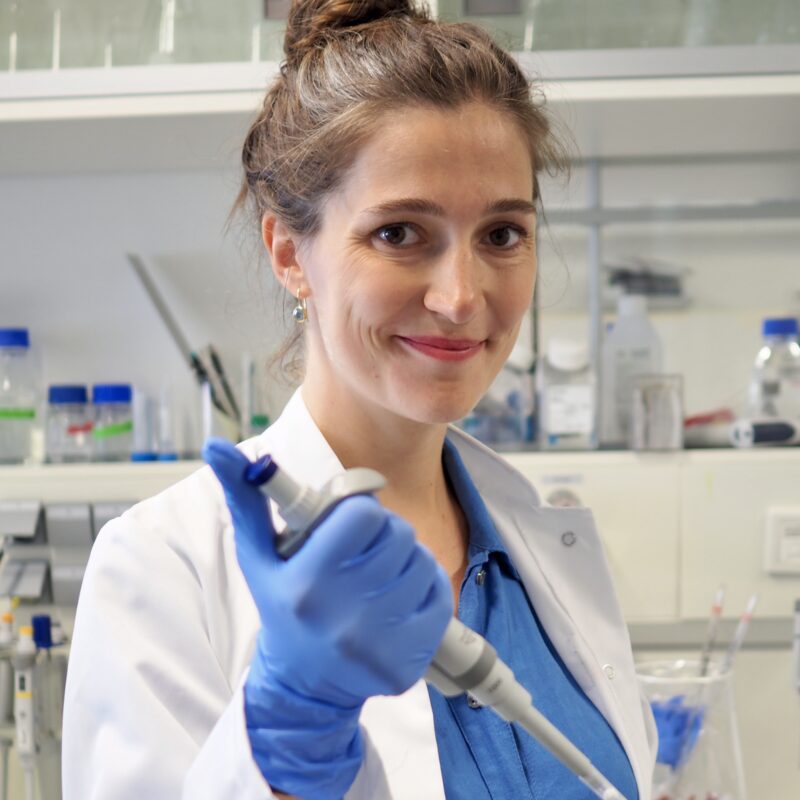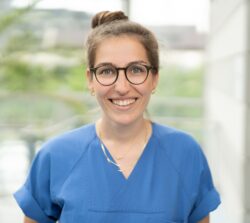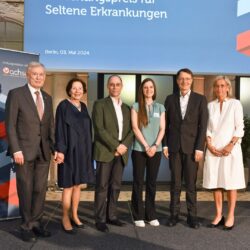Rare diseases affect children and adolescents in eight out of ten cases. Their participation in medical progress therefore depends crucially on dedicated pediatricians who are committed to the balancing act between bedside and laboratory. The Alliance4Rare research network initiated by the Eva Luise and Horst Köhler Foundation provides structured Clinician and Medical Scientist Programs (CS4RARE) to prepare researching paediatricians for this challenging task and to give them the necessary freedom for scientific work at a high level. The programs grant participants protected research periods in which they are released from clinical duties to advance scientific projects on rare diseases.
Dr. Wilpert, you have been selected for the Junior Clinician Scientist Program of the Alliance4Rare, funded by the Eva Luise and Horst Köhler Foundation and the Berliner Sparkassenstiftung Medizin. What motivated you to follow this particular path in science and clinical practice
Rare diseases are common in neuropaediatrics. Every day I see families who are desperately hoping for a diagnosis and treatment option after many years of searching. For me, it seemed a perfectly natural step at the beginning of my clinical training as a pediatrician to apply the scientific methods I had learned during my time as a PhD student to the specific problems of our patients. Children and adolescents with rare diseases are dependent on clinician scientists who go beyond standard care to listen, examine and, if necessary, venture into the laboratory. The Charité is a hub for this and I try to offer it in neuropaediatrics. Even small gains in knowledge bring a lot of hope to the families affected.
What are you currently working on and what would you like to achieve in the field of rare diseases?
I would love to offer all the children and young people I look after the opportunity to develop research projects on their issues. But good science takes time and expertise, so I am currently focusing on Allan-Herndon-Dudley syndrome (AHDS).
AHDS is caused by mutations in the thyroid hormone transporter MCT8. As a result, thyroid hormones secreted into the blood by the thyroid gland cannot be absorbed into the brain, where they are necessary for brain development. Patients with this condition suffer from a developmental and movement disorder that unfortunately cannot be treated effectively to date. Together with international colleagues, we already described symptoms of dopamine deficiency in our patients as part of my doctoral thesis. Based on this observation, I am currently investigating in the laboratory which step of the dopamine effect is disrupted in AHDS (single-cell RNA sequencing of dopaminergic nerve cells from patient stem cells), where MCT8 is expressed in the brain (single nucleus multiomics of human brain tissue) and which structures could therefore be the target of therapy. At the same time, we are already treating patients with the “dopamine substitute” levodopa/carbidopa, which leads to an improvement in patient-oriented therapeutic goals (e.g. improved voluntary movement). I hope that this project will contribute to a better understanding of the disease mechanism, targeted therapy development and a better quality of life for children with AHDS.
What opportunities does Alliance4Rare funding open up for you in your day-to-day work that you wouldn’t have otherwise?
The funding from the Alliance4Rare enables me to spend 25% of my working time on my research projects. The isolation of cells from neuronal networks for single-cell studies alone takes a whole working day. And patient care requires significantly more time than regular follow-up, so I would not be able to carry out my projects without the support of the Junior Clinician Scientist for Rare program. The Alliance4Rare also offers me the opportunity to network in the field of rare diseases and increase the visibility of AHDS.
Dr. Nina-Maria Wilpert, PhD studied human medicine at the Charité – Universitätsmedizin Berlin and wrote her doctoral thesis on “Molecular and phenotypic characterization of two monogenic developmental disorders of the nervous system: MCT8 deficiency & FOXG1 syndrome”. She is currently undergoing specialist training as a pediatrician at the Department of Pediatrics with a focus on neurology. As part of the Junior Clinician Scientist for Rare program, Dr. Wilpert convinced with the project “The role of dopamine in Allan-Herndon-Dudley syndrome (AHDS/MCT8 deficiency)”. The funding period extends from January 2024 to December 2025.



